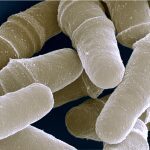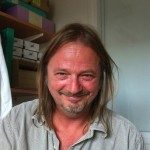Link to Pubmed [PMID] – 20967229
PLoS ONE 2010;5(10):e13379
Multiple genome maintenance processes are coordinated at the replication fork to preserve genomic integrity. How eukaryotic cells accomplish such a coordination is unknown. Swi1 and Swi3 form the replication fork protection complex and are involved in various processes including stabilization of replication forks, activation of the Cds1 checkpoint kinase and establishment of sister chromatid cohesion in fission yeast. However, the mechanisms by which the Swi1-Swi3 complex achieves and coordinates these tasks are not well understood. Here, we describe the identification of separation-of-function mutants of Swi3, aimed at dissecting the molecular pathways that require Swi1-Swi3. Unlike swi3 deletion mutants, the separation-of-function mutants were not sensitive to agents that stall replication forks. However, they were highly sensitive to camptothecin that induces replication fork breakage. In addition, these mutants were defective in replication fork regeneration and sister chromatid cohesion. Interestingly, unlike swi3-deleted cell, the separation-of-functions mutants were proficient in the activation of the replication checkpoint, but their fork regeneration defects were more severe than those of checkpoint mutants including cds1Δ, chk1Δ and rad3Δ. These results suggest that, while Swi3 mediates full activation of the replication checkpoint in response to stalled replication forks, Swi3 activates a checkpoint-independent pathway to facilitate recovery of collapsed replication forks and the establishment of sister chromatid cohesion. Thus, our separation-of-function alleles provide new insight into understanding the multiple roles of Swi1-Swi3 in fork protection during DNA replication, and into understanding how replication forks are maintained in response to different genotoxic agents.

